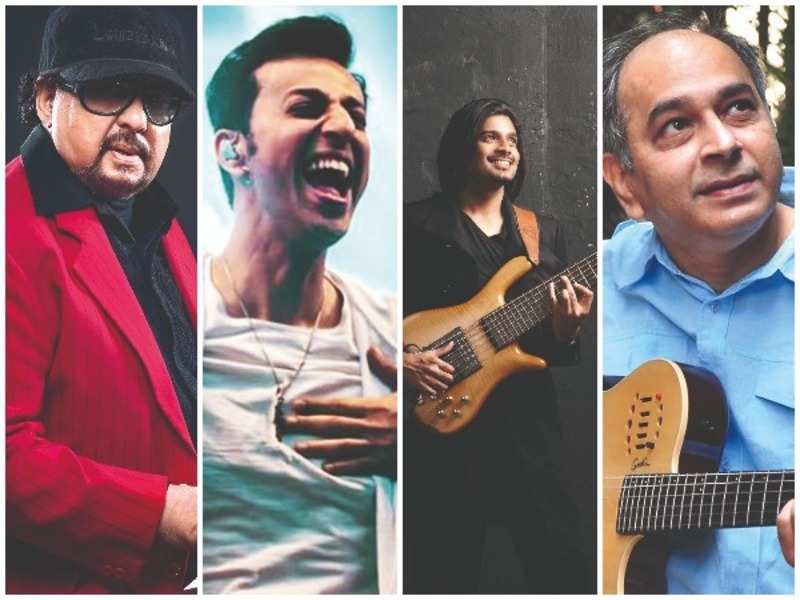Say jazz, and the thought that comes to mind is freedom. When BT caught up with a bunch of musicians who belong to this free-spirited genre of music, they couldn’t agree more. “Jazz symbolises the spirit of freedom. Look around you, it is everywhere,” says musician Louiz Banks, who is often referred to as ‘The Godfather of Indian Jazz’. He believes that the beauty of the genre is that it evolves with time.


Say jazz, and the thought that comes to mind is freedom. When BT caught up with a bunch of musicians who belong to this free-spirited genre of music, they couldn’t agree more. “Jazz symbolises the spirit of freedom. Look around you, it is everywhere,” says musician Louiz Banks, who is often referred to as ‘The Godfather of Indian Jazz’. He believes that the beauty of the genre is that it evolves with time.
‘There is a resurgence of jazz among the young’
Taking us back to the time when Mumbai was Bombay, he narrates, “Jazz was the popular music-of-the-day in the early ’20s to ’60s. Indian musicians picked up the form when they played western music at clubs and hotels. The innovative ones among them went on to become good jazz musicians (my father, George Banks, was one of them). People listened and danced to jazz tunes till the emergence of disco music in the ’70s. After that, it began to lose its sheen among the youngsters and got reduced to being played only for a niche audience (comprising the 40-plus crowd). Around that time, fusion jazz was making a mark around the world. In India, it was bands like Shakti, Sangam and Silk that were instrumental in popularising the genre here.”
Louiz points out that at the moment, he’s happy to state that jazz is back. “There is resurgence of jazz today, thanks to the interest shown by our serious-minded youth towards the genre. I’ve always believed that jazz will become popular if the youth starts listening and playing it. I’m glad to be proven right.” Louiz’s take on jazz resonates with composer-guitarist Sanjay Divecha, who feels that younger Indian musicians and music listeners are more inclined to exploring jazz. “There has been an increase in the appreciation of jazz among the younger audiences. It is a modern music genre, which has an amazing quality to embrace and fuse with other music styles seamlessly,” he explains.
‘It transcends borders and cultures, including Indian classical and folk’
Jazz musicians feel that the genre has become more popular among young music aficionados, because it lends itself well to experimentation and fusion. Appreciating the dynamism of the music form, Louiz says that the genre doesn’t need to be restricted to its traditional form. “Creative and forward-thinking artists incorporate jazz in their music without being conscious of it. And that is the beauty of jazz; it transcends borders and cultures,” he says. Sanjay is all for fusion, too. “Contemporary jazz and fusion is more relevant today. In the world we live in, we are lucky to be exposed to so many music styles from across the globe. I have spent a better part of my life in recent years, dabbling with the fusion of the classical and folk traditions of India with jazz, funk, blues, African and Latin music,” he says.
‘Venues ask for jazz soundscape now’
Singer Vasundhara Vee feels that jazz has a universal appeal, and fusion makes it relevant for all age groups. “There are venues and events that specifically ask for jazz soundscape now. This was not the case 12 years ago, when I started singing professionally. Rock was the go-to word at that time. We had some great rock bands then, and almost no jazz ensembles,” she recalls.
However, composer and bass player Sheldon D’Silva feels that things are not all that hunky-dory for jazz in India, even today. “When it comes to venues, sponsorship and support, there has been a decline for jazz events in India. So if you see young cats playing jazz, they are doing so purely out of passion and love for the music. But they can’t sustain by dabbling in only that genre. Even if promoters hold jazz events, they fear running into losses. As a voice and an art of improvisation, we still implement it in all the music we do. We try to keep the art form alive, in whatever we do, be it commercial or mainstream. Louiz and many young enthusiasts are also holding the fort together, giving hope to future generations,” he says.
Jazzin’ up Bollywood
Since it’s so versatile, jazz has been an integral part of Hindi film music for a long time. In the past, it lent itself beautifully to songs like Gore Gore O Banke Chhore (Samadhi, 1950), Shola Jo Bhadke (Albela, 1951), Babuji Dheere Chalna (Aar-Paar, 1954), Mera Naam Chin Chin Chu (Howrah Bridge, 1958) and Dil Deke Dekho title song (1959), among others. In the recent past, many composers have also come up with songs high on jazz influences. Amit Trivedi’s Bombay Velvet soundtrack and Aunty Ji (Ek Main Aur Ekk Tu, 2012), Shankar-Ehsaan-Loy’s Girls Like To Swing (Dil Dhadakne Do, 2015) and Ye Tumhari Meri Baatein (Rock On, 2008), Vishal Bhardwaj’s Darling Aakhon Se (7 Khoon Maaf, 2011) and AR Rahman’s title track of Jaane Tu Ya Jaane Na (2008) are among some fine examples.
Musicians feel that the genre works for films because of its universal appeal. Says composer-singer Salim Merchant, “Jazz has a spirit of liberation and brings a distinct colour to film music. It’s a great genre to indulge in when you’re doing a period film or an experimental subject. We (Salim-Sulaiman) tried using funk as a style when we were scoring the background for Rocket Singh: Salesman of the Year (2009). It was a unique film and required an exceptionally unique score.” Sheldon adds, “Indian music is more melody-based, so jazz is a great enhancement.”
Women and jazz
Jazz used to be a male-dominated genre early on, but female jazz performers’ and composers’ contribution to the music form has been immense. Singers Betty Carter, Ella Fitzgerald, Adelaide Hall, Billie Holiday, Abbey Lincoln, Anita O’Day, Dinah Washington and Ethel Waters, and composers and instrumentalists such as pianist Lil Hardin Armstrong and songwriters Irene Higginbotham and Dorothy Fields are some of the most popular female jazz musicians. Women began playing instruments in jazz in the early 1920s and drew recognition on the piano.

